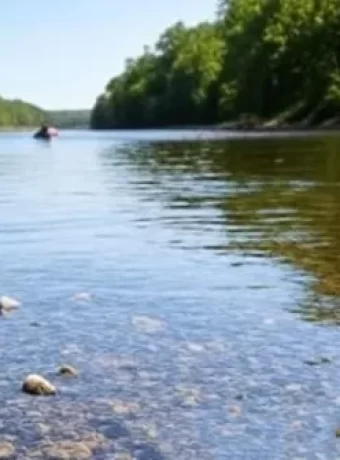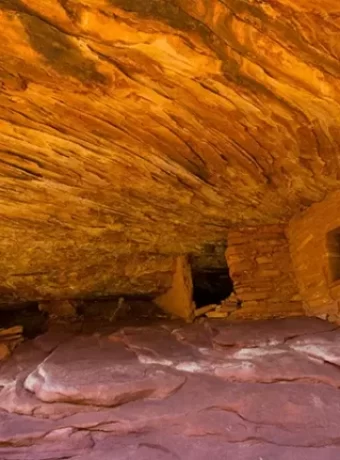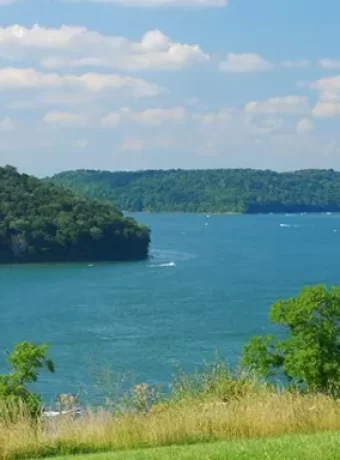Explore History of Outer Banks – Roanoke Island
Outer Banks, a string of barrier islands off the North Carolina coast, History of Outer Banks – Roanoke Island whispers tales of shipwrecks, pirates, and a colony lost to time. Roanoke Island, nestled within this chain, holds a particularly mysterious place in history. This blog post delves into this captivating history, from the Native American presence to the Lost Colony and beyond. History lovers and beachgoers alike will discover a rich tapestry woven with fact, legend, and enduring questions. Let’s journey through time, exploring the captivating story of this coastal region.
Table of Contents
A History of the Outer Banks – Roanoke Island
Native American Heritage
Long before European ships arrived, the Outer Banks provided sustenance and shelter to various Native American tribes. The Algonquin people, including groups like the Croatan and Roanoke, thrived in this coastal environment.
They fished the bountiful waters of the Croatan Sounds, hunted game in the maritime forests, and cultivated the land. Their imprint on the Outer Banks remains evident even today. Archaeologists continue to unearth artifacts that offer glimpses into their lives, suggesting a human presence dating back thousands of years.
The Roanoke Colonies: A Story of Hope and Mystery
Sir Walter Raleigh, an English courtier, spearheaded efforts to establish a permanent English settlement in North America. Roanoke Island, a small island, became the focus of these ambitions. In 1584, Raleigh’s first expedition made landfall, initiating contact with the native Algonquin tribes.
The following year, in 1585, a group of colonists, the Lane Colony, attempted to settle the island. This venture proved short-lived. Due to strained relationships with Native American tribes and a shortage of provisions, the settlers returned to England.
The Lost Colony: An Enduring Enigma
The mystery of the Lost Colony draws many to research the history of Outer Banks and Roanoke Island. This third attempt at colonization established 117 men, women, and children. They hoped to create a thriving community, a new English colony on the shores of North Carolina.
Among these settlers, John White served as Governor. He returned to England for supplies, intending a swift return. However, war with Spain delayed his voyage.
White finally returned in 1590 to find the colony abandoned. The only clue was the word “CROATOAN” carved into a post. The disappearance of the Roanoke Island colonists remains an enduring mystery to this day. Speculation ranges from integration with Native American tribes to struggles with provisions and conflict.
Searches for the lost colonists continued for years, including a Jamestown effort 20 years later, but yielded no definitive answers. The fate of the “lost colony” continues to fascinate. Where did the original colonists go?
Roanoke Island in Later Centuries
After the disappearance of the Lost Colony, the Outer Banks continued to play strategic roles throughout history. During the Civil War, the Confederacy initially held bases on Roanoke Island until the Union army gained control.
The Union army established the Freedman’s Colony, offering asylum to southern slaves seeking freedom. This community faced challenges, including disputes with former landowners, leading to its eventual closure after a few years. However, it represented a significant moment in the island’s history.
The Outer Banks Today
Today, Roanoke Island and the Outer Banks attract tourists and residents alike. People come to explore the history of Outer Banks and Roanoke Island and its vibrant cultural heritage. They enjoy the natural beauty of the ocean and sound beaches and experience island life.
Outdoor enthusiasts can enjoy a variety of activities, from surfing and paddleboarding to kayaking and windsurfing in the Shallowbag Bay. Visitors can also explore nature trails, climb Jockey’s Ridge sand dunes, and experience the maritime forests.
Roanoke Island Festival Park offers a glimpse into the past. Fort Raleigh National Historic Site, a focal point for history buffs, provides further insights. Ongoing archaeological digs continually reveal new discoveries, including artifacts found at the site.
The Elizabethan Gardens, a beautiful horticultural tribute to the Elizabethan era, offer another attraction. The longest-running outdoor symphonic drama, located near the site of the Lost Colony, dramatizes the story of the English settlement. The Outer Banks offers something for everyone, whether seeking world-renowned waves, cultural experiences, or natural beauty.
Plan a Visit to Kitty Hawk
Kitty Hawk, North Carolina, is more than just a beach town. It’s where the Wright brothers made history. Their first successful flight happened on December 17, 1903, at Kill Devil Hills, just south of Kitty Hawk. This spot is now the Wright Brothers National Memorial. You can explore exhibits and see a full-scale replica of their plane.
But there’s so much more to Kitty Hawk than just its place in aviation history. This town is nestled on the Outer Banks. The Outer Banks are a chain of barrier islands with beautiful beaches, awesome wildlife, and rich history.
Love to surf? The Outer Banks offer great waves. The area is also a big draw for people who love to fish, kayak, and windsurf. After a day of fun in the sun, check out the local shops and restaurants. You can also take a ferry to Roanoke Island and learn about the lost colony.
If you’re planning a trip to Kitty Hawk, you have many options for places to stay. There are campgrounds, cozy cottages, and beachfront hotels. And if you’re bringing your furry friend, some spots are pet-friendly.
Kitty Hawk is easy to reach by car. It’s a great place for families, history buffs, and outdoor lovers. But Kitty Hawk offers so much more than just beautiful beaches. The area boasts a fascinating history. Native American tribes lived here for centuries before European settlers arrived.
When you’re in Kitty Hawk, make sure you explore the Cape Hatteras National Seashore. This park protects a large stretch of the Outer Banks. It includes beaches, dunes, and marshes. You’ll find lots of hiking trails and places to see wildlife. You might even spot some wild horses.
History Bodie Island Lighthouse
The Outer Banks of North Carolina are famous for their striking lighthouses. One of the most iconic is the Bodie Island Lighthouse. It stands tall, a black and white spiral against the bright blue sky. But this isn’t the first lighthouse on Bodie Island. There’s a whole history here, full of storms and shipwrecks.
The first Bodie Island Lighthouse was built in 1847. This was way back before the area became a popular tourist destination. The coast was dangerous. Ships needed a beacon to guide them through the treacherous waters. This first lighthouse wasn’t strong enough, though. The soft ground it stood on began to sink.
So, only three years later, they built a second lighthouse. It stood a little further inland. This one lasted longer, but the Civil War brought trouble. Confederate troops destroyed the second lighthouse to keep it out of Union hands. They didn’t want the Union using the lighthouse to navigate.
After the war, the need for a lighthouse was greater than ever. In 1872, the lighthouse you see today was finally built. This third lighthouse was built with a first-order Fresnel lens. This huge lens could throw light incredibly far. It helped many ships navigate safely past the dangerous shoals of the Outer Banks.
Today, you can visit the Bodie Island Lighthouse. You can even climb to the top for amazing views of the Atlantic Ocean and the surrounding coastline. You’ll also find the Cape Hatteras National Seashore nearby. This spot is perfect for exploring the natural beauty of the Outer Banks. The lighthouse stands as a reminder of the area’s history. It also represents the importance of keeping ships safe. The Roanoke Island and Outer Banks area has a rich history, including the story of the Lost Colony, and the Bodie Island Lighthouse is just one part of that story. It’s a place where history and natural beauty meet.
FAQs about History of Outer Banks and Roanoke Island
Was Roanoke on the Outer Banks?
Yes, Roanoke Island is part of the Outer Banks, a chain of islands off the North Carolina coast. It is situated within Roanoke Sound.
What did Manteo have to do with Roanoke Island?
Manteo, a Native American chief from the Croatan tribe, played a crucial role in interactions with the English colonists at Roanoke. He acted as a liaison and intermediary, facilitating communication and understanding between the two cultures.
What is the history behind the Outer Banks?
The Outer Banks has a rich history dating back thousands of years to the Native American inhabitants. The English exploration and settlement of the Outer Banks, including the Roanoke colonies, marked a turning point.
The area played a role in the Civil War, offering refuge to formerly enslaved people at the Freedman’s Colony. The Wright brothers’ first flight at Kitty Hawk in 1903 added to its historical significance.
What is the historical significance of Roanoke Island?
Roanoke Island’s historical significance lies in its role as the site of early English colonization attempts. The Lost Colony remains a central mystery in American history. The island served as a haven during the Civil War, showcasing a different chapter in its story. The ongoing discoveries at Fort Raleigh National Historic Site continually deepen our understanding of the island’s past.
Conclusion of History of Outer Banks Roanoke Island
The history of Outer Banks and Roanoke Island spans millennia, showcasing human resilience and adaptation. From ancient indigenous settlements to the enigmatic Lost Colony and the establishment of a permanent English settlement, this coastal region has witnessed pivotal moments in history.
Exploring the intersection of history and natural beauty offers a rewarding experience. Visiting the Outer Banks provides insights into the past and present of this unique area. It is a place where history comes alive, leaving a lasting impression on all who visit.






